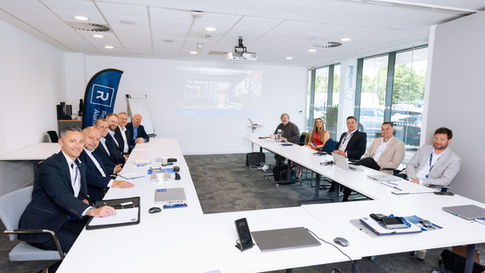Oliver Cripps, Head of Sustainability UK & Ireland at Siniat, discusses how sustainability and performance must go hand in hand to futureproof the UK’s building stock.
With the largest set of Building Regulation updates to impact the construction sector in over a decade, the industry is grappling with the requirement to comply with new and often complex legislation and processes, as well as increased concerns around liability.
Much of this, as we know, has been the result of some high-profile building safety failures. However, the industry-wide recognition of where things have gone wrong over recent decades has been a significant catalyst for change. Many of us have seen the changing landscape of construction not only as a challenge, but as an opportunity to do better, to shift our approach and reframe our focus. This has been no small feat and certainly isn’t easy, but we are beginning to see more accountability and meaningful action.

This optimistic attitude is critical to ensuring the safety and performance of our buildings. However, we must not forget that to truly build for the future, sustainability must play a fundamental role. As an industry we need to move away from seeing sustainability as a luxury and view it as a necessity in line with factors like cost, time and quality.
Top of the agenda
While the sector is coming to terms with the new regulatory landscape, we cannot let net zero fall to the wayside. While important developments have been made, particularly when it comes to operational carbon – for example, the uptake of lower energy systems in line with Part L – progress has been slow. The latest Construction Leadership Council (CLC) progress report on the CO2nstruct Zero Performance Framework shows the industry is only meeting its net zero targets in four of nine priority areas.
Waste is a vital area that needs to be addressed. The construction industry is too reliant on landfill and, according to the Construction Products Association (CPA), five million tonnes of construction and demolition waste currently ends up being buried. In fact, the construction industry generates a whopping 62% of the UK’s waste, with 32% of this being sent to landfill.
By making sustainability and waste reduction a core focus, we can create a real step change that could have a huge impact on the future. This must include how we can design out waste in the first place, how we can minimise the extraction of raw materials and prioritising products with high recycled content.
For example, a main component used in the manufacture of Siniat plasterboard is gypsum, which is infinitely recyclable. In fact, Siniat plasterboard contains over 20% post-consumer recycled gypsum content, compared to a UK sector average of 9.6% (based on 2022 data). So, by going the extra mile to collect and reuse gypsum waste within our factories and from sites, we can limit our consumption of natural virgin resources.
The environmental impact of the manufacturing process, and the inclusion of recycled and recyclable content in materials should always be important considerations when specifying products. Environmental Product Declarations (EPDs) measure the environmental impact of a product, including how it performs at different stages of its lifecycle. While carbon (known as Global Warming Potential in an EPD) is the most recognised measure, other indicators such as acidification, eutrophication and water use are also included.
One key driver for EPDs in the construction sector has been the credits gained under green building schemes such as Building Research Establishment Environmental Assessment Method (BREEAM) or Leadership in Energy and Environmental Design (LEED). But Whole Life Carbon assessments are becoming more widespread and there are discussions that the UK could follow France in introducing maximum thresholds for carbon per m2 for certain building types. So, specifiers looking to source products with both high performance and sustainability credentials should look out for these accreditations as a priority.
.png)








































.png)










